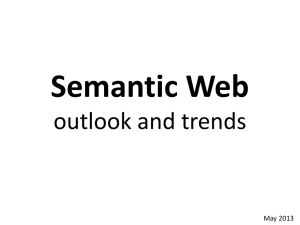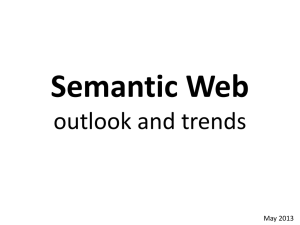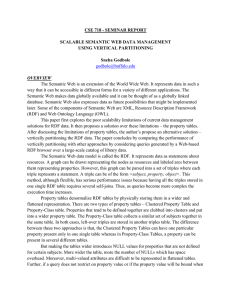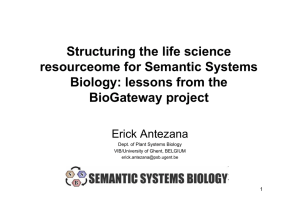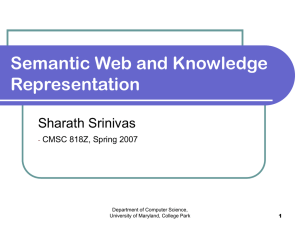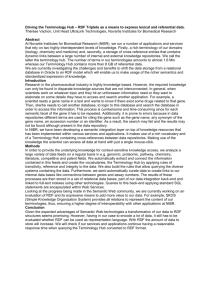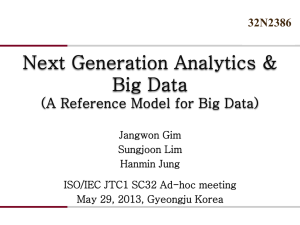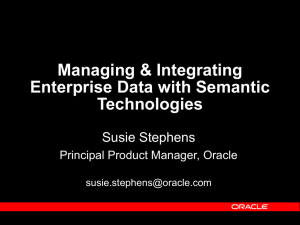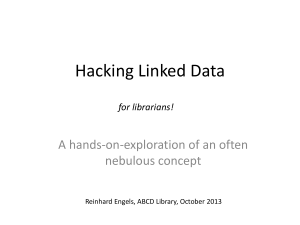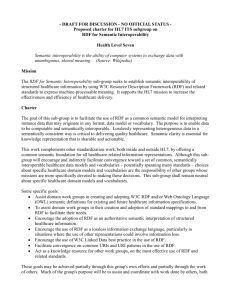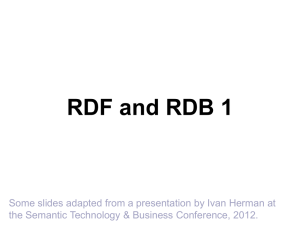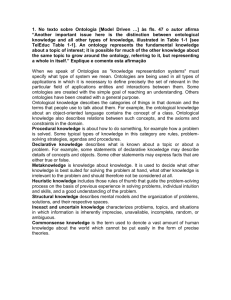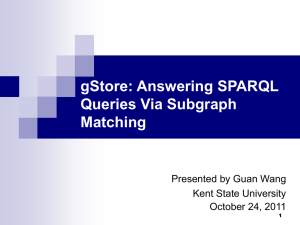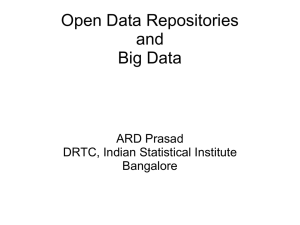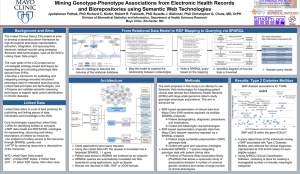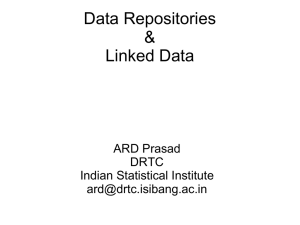SAM in a Social Networks
advertisement
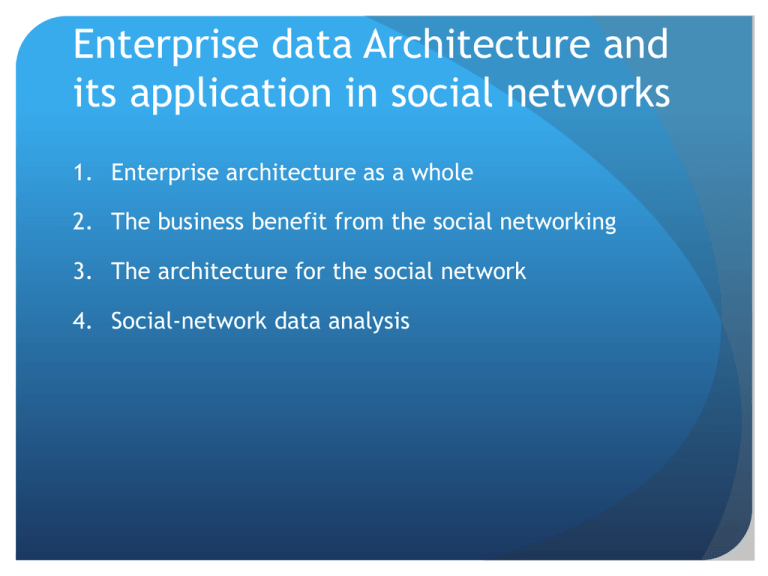
Enterprise data Architecture and its application in social networks 1. Enterprise architecture as a whole 2. The business benefit from the social networking 3. The architecture for the social network 4. Social-network data analysis Why we need Enterprise Architecture? 1 IT can help us Managing the IT change and the individuals and teams involved 2. It helps tailoring the transformation using a formal but adaptive process that is based on your unique starting point of staff skills, project mix, business priorities and challenges. 3 Align the technology planning with business strategy The Component of Enterprise Architecture Business Architecture The function of the business architecture is to clarify, elaborate, and illuminate the business model (how an organization creates value) to create new insight and perspective. Identify opportunities, and provide a foundation for creating a cohesive business operating model. providing a business-focused design foundation for an ongoing stream of business technology solution delivery. Data Architecture (Info Architecture, ) Most strategically, data architecture defines data and data relationships (structured and unstructured) to facilitate analyses that feed business strategy and optimization decisions (e.g., through data warehousing and BI applications) Application architecture--It begins with the identification of the applications needed to support the business and carries through to the design and construction (or acquisition) as well as the integration of applications. What is Enterprise Data Architecture Responsible for? An EDA is responsible for providing a consistent strategy for conceptually, logically, and physically governing (i.e., uniquely defining and organizing) the data that defines an enterprise An EDA is foundational to an enterprise IT architecture Infrastructure architecture and whole structure. It in the scope of IT operation ,covers all the supporting IT elements that the organization must operate on a day-to-day basis, the tools and processes to monitor and manage them. The importance of the social media to the business 25% of small business owners plan to spend more on social networking in 2010( Ad-ology Small Business Marketing Forecast). Facebook was ranked as the most beneficial social network for small businesses, followed by LinkedIn and Twitter. Leverage it with an effective business social media strategy. Social network-evolutionary shared knowledge architecture Architecture defined capability to collect ,discover ,represent ,relate, and reason about the knowledge. it supports dynamic coordination and social use of knowledge resource relevant to missions Social networking architecture enables evolution of community knowledge Knowledge is dynamic and evolves with human experience and social networks. An overarching knowledge perspective is required across all architecture views Manage the enterprise data from the Semantic prospective. Enterprise Data Management To better understanding & document the data To develop externally facing enterprise data management architectures To “structure” unstructured data To refocus data management on “Facts” (semantic relationships ) To maintain a more meaningful dialog with the business associates Semantic interaction leading to social knowledge evolution Sematic technology standard/ recommendations SPARQL – SPARQL Protocol And RDF Query Language SPARQL can be used to express queries across diverse data sources, whether the data is stored natively as RDF or viewed as RDF via middleware SPARQL contains capabilities for querying required and optional graph patterns along with their conjunction and disjunctions RDF – Resource Description Framework RDF is a directed, labeled graph data format for representing information in the Web GRDDL – Gleaning Resource Descriptions from Dialects of Languages GRDDL introduces markup based on existing standards for declaring that an XML document included data compatible with RDF and for linking to algorithms (typically represented in in XSLT) for extracting this data from the document 11 Relational To Ontology Mapping (Example) Pathological Change Agent involves involves Neuronal Property Pathological Agent Neuron has inhibits inhibits inhibits Compartmen t Is_located in Receptor Is_located in Drug Channel Prepared by William J. Pjura for Enterprise Data World 2011; Unauthorized copying/use not allowed How can it benefit? 1. A shared knowledge architecture perspective ensures consistent semantic interoperability 2. A semantic interaction model is define to assist in the analysis and development of semantically consistent architecture interactions Analysis the social network from architecture prospective? 1 analysis the data management The Analysis Data Management collects the transactional data from the system that manages the Social Network, like an Enterprise 2.0 system, 2 analysis the computation The Analytics Computation is the set of all analytics queries (algorithms) that are executed on a consistent data set. These algorithms can be of various types, can run quickly or take up significant time, and independent as well as dependent on each other (to avoid re-computation of already available data). The SNA lifecycle The overall life cycle of Social Network Analysis (SNA) starts with collecting the data updates coming from production systems: Phase 1: Data Collection. This phase is an ongoing phase in the sense that the stream of data from the production systems is continuous and the SNA system needs to ensure that all incoming data are reliably stored (independent of the arrival rate). Phase 2: Data Preparation. This phase prepares a snapshot of the collected production data. The snapshot is the basis for a complete execution of the various analytics queries. Since all analytics queries are run on the same snapshot, the outcome of each of the analysis is consistent with respect to each other. Phase 3: Analysis Execution. As soon as the snapshot is made available, the analysis starts and executes all analytics queries completely. Phase 4: Result Finalization. After the analysis execution phase the results are made available to the user interface for end users and analysts to examine the analysis results. Social network analysis life cycle Thanks for your attention!!!

